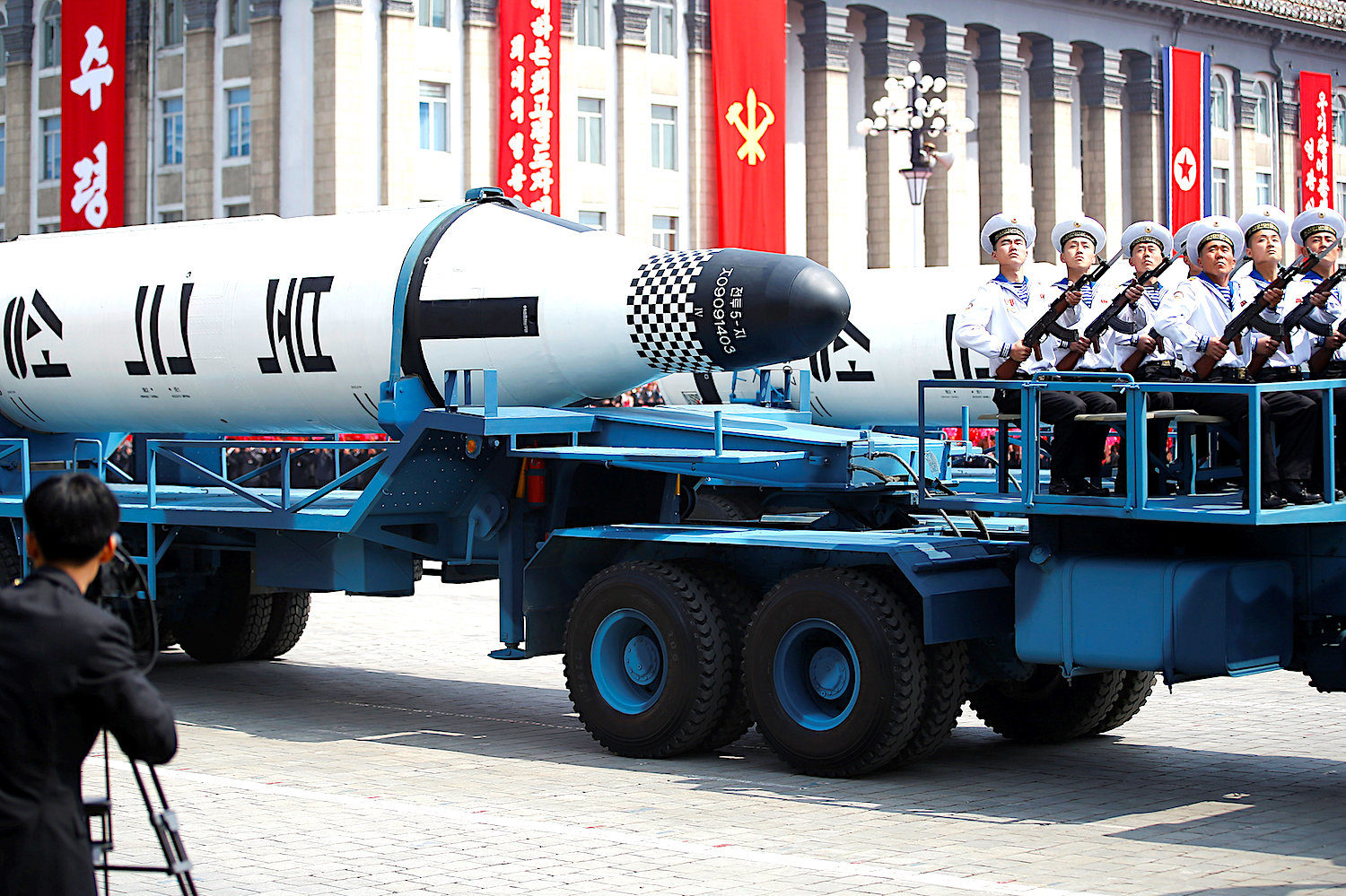
© Reuters/Damir SagoljRockets on Parade
Observers worldwide took note of the
array of weapons put on display during Saturday's military parade in Pyongyang, including mockups of new long-range missiles. In a special commentary for Sputnik, analyst Vasily Kashin said that while
the country's ICBM program is still far from the test phase, its leaders certainly aren't lacking in ambition.
On Saturday, marking the 105th anniversary of the birth of Kim Il-sung, founder of North Korea, Pyongyang showed off an array of missile weaponry, including
mock-ups of very large, previously unseen ballistic missiles carried by transport-launch vehicles bearing a striking resemblance to the Russian RT-2PM Topol mobile intercontinental ballistic missile (ICBM) system.At the moment, along with a range of tactical and short-range missiles such as the Hwasong-6, a derivative of the Scud, North Korea is also known to be engaged in the testing of several medium and intermediate-range systems, including the liquid-fueled Hwasong-10 IRBM. Flight testing of the latter is ongoing, with operational range estimated at 2,500-4,000 km.
More impressive, analysts say, are North Korea's two solid-fueled medium-range missiles - the sea-based KN-11 Pukkuksong-1, and its ground-based cousin, the KN-15 Pukkuksong-2. These mobile systems' range is unknown, with intelligence services offering a wide range of estimates between 1,250 and 2,500 km.
In a special commentary for Sputnik,
well-known Russian military analyst Vassily Kashin explained that the KN-11 and KN-15s are known to be among North Korea's most advanced missile systems. More importantly, however, they are the closest among the new missiles to actually being deployed.
"At the moment, successful testing of these missiles is being carried out," the expert explained. "Factually, the
North Koreans have reached the same level that China was at in the early 1980s, when Beijing was carrying out flight testing of its JL-1," China's first submarine-launched missile, "created on the basis of the ground-based DF-21" (a Chinese mobile medium-range ballistic missile).
Kashin recalled that it took China 5-6 years to complete flight testing on the JL-1. "The North Koreans began flight testing on the Pukkuksong-1 in 2014, and
it's possible that they will be ready to deploy them closer to the end of the decade. These missiles have an estimated range of up to 2,000 km, which is comparable to the JL-1 and the DF-21A."
According to the analyst, a successful deployment of these missiles could be seen as a real achievement for the North Koreans.
"Pyongyang will attain the guaranteed ability to strike at targets anywhere in South Korea and Japan, but still would not be able to reach the United States."North Korean engineers are believed to have made about a dozen tests of the Pukkuksong-1 and its ground-based variant since October 2014; the latest test is thought to have taken place in February. In August 2016,
Pyongyang carried out a successful submarine-launch of the Pukkuksong-1.According to Kashin, these successes are creating the basis for further progress. However, "the transition to the creation of an intercontinental ballistic missile in general and a solid-fueled-based ICBM in particular
will require a qualitative leap in the development of North Korea's production base and test infrastructure," he emphasized.
North Korea has been engaged in the development of the KN-08, also known as the Rodong-C or Hwasong-13, a road-mobile ICBM is believed to have been under development since the early 2010s. Pyongyang has showed off the missile at parades on several occasions, including the 100th anniversary of the birth of Kim Il Sung in April 2012. However, two suspected tests, which US intelligence said had been carried out in October 2016, were believed to have ended in failure.
Kashin stressed that in order to actually produce such advanced weapons, the North Koreans "will have to learn how to produce solid fuel rocket engines with a large diameter. They will have to experiment with new fuels and new missile casing. An important limitation here will be based on their ability or lack thereof to purchase the necessary equipment abroad or create their own (but apparently, also using foreign components)."
Comment: Lucky no 'super power' wants to take North Korea under its wing...so far.